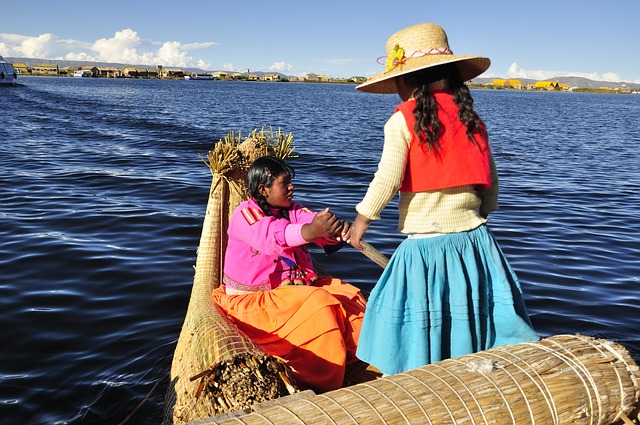One of the things that we encourage clients to do is to build their own capacity to deal with Latin America after our consultancy finishes. Depending on the client, this may mean, for example:
- – Recruiting new staff to deal specifically with the region for the first time
- – Recruiting more staff to deal with the region as operations get more complex and/or sales grow
- – Assigning existing staff to the region
- – Training current staff across different areas on Latin America
Staff might be based at HQ (UK in the case of our clients), elsewhere (the US being a preferred option for many companies) or within the region.

Can your team deliver beyond stereotypes?
Whichever your circumstance, if you are at the strategic level building this capacity, these are some important points to take into account:
1- Why Latin America? And how?
Have a very clear strategy – what you do regarding internal capacity building will depend 100% on that. It’s impossible to build a team around a weak strategy, and you need senior management buy-in for the whole process.
2- Latin America is huge
Latin America is an enormous region that stretches throughout North, Central and South America, in two hemispheres, with 20 countries and 600 million people. Make sure that the scope of the person dealing with the region is clear – are they covering Mexico as well as Uruguay? Brazil as well as Ecuador?
3- Resources
Travel budgets come to mind quickly here. Doing business with Latin America is personal and ideally you’d have to travel to the region regularly (how regularly will depend on your strategy, from once a year to once a month!). Travelling to and within Latin America is not cheap and it takes time. A return ticket from Heathrow to any capital will cost from around GBP 600 to around GBP 1500 (economy, considerably more for business/first class), not taking into account getting to/from London. Travelling within Latin America can be expensive (Buenos Aires to Panama City can easily cost GBP 600, for example, and Sao Paulo to Santiago can easily cost GBP 400). You also need to allow for long distances as well as altitude and different climates, as well as differing safety conditions.
Another important resource to think about are translated materials. Your strategy will dictate if you start translating just a company brochure or a landing page, or a few technical datasheets. You might need your whole website translated, instruction manuals, or all your marketing materials. Remember that you will need Portuguese in the case of Brazil and Spanish for the rest of the region (as localised as possible and definitely not mainland Spain translations!).
4- The person
If you are recruiting someone to work with Latin America, we suggest looking at these factors, apart from occupation-specific attributes (that will be that same for other regions):
– Making sure that the person speaks Portuguese (ideally Brazilian Portuguese) if your focus is on Brazil, and/or Spanish if your focus is in the rest of the countries
– Experience in dealing with Latin American businesses (different from dealing with the region socially and different from dealing with Spain, Portugal or Italy)
– Current understanding of the region (the key word there is “current”)
– Experience in working for European/US/international companies (you want a minimum level of corporate literacy, don’t assume everyone in the region has it, from turning up to meetings on time, to drafting agendas, sending regular reports promptly or answering to emails)
In the case that you are recruiting from within the company, the above requisites would be ideal but not always possible, but the person show still show:
– Willingness to learn at least some basic Spanish/Portuguese
– Cultural openness/sensitivity (and a good degree of likeability!)
If your new recruit is based within the region, make sure you keep in touch at least weekly. Think carefully about where this person should be based (again, it depends on your strategy – if your key market is Chile, there’s no point in this person being based in Mexico, if your product is for temperate climates, there’s no point in this person being based in Honduras).

Can your team learn to tango?
5- Be realistic
Latin America can be painfully slow for doing business. You can’t expect someone to hit the ground running and produce sales within a month, or six. You need at least a one-year plan, within a 5-year strategy.
6- Make sure everyone’s involved
One of my favourite things about my job is to share Latin America with everyone in a company that hasn’t focused on this region before. It’s a journey that, in my opinion, everyone should know at least a little bit about. Even a one-hour training session for most staff will suffice and motivate them. Staff that will be more involved can probably do with a bit more training (unless they’re already very experienced) – especially before making the investment to send them to the region.
Whether you have someone in charge of the region or not, you need to build a team that includes (many of them outsourced) logistics experts/freight forwarders, customs experts/brokers, translators, (digital) marketing experts, export documentation experts, a good notary public, a solicitor and, depending on your involvement, tax specialists and regulatory specialists.
Is Latin America next for your business? Are you planning on building in-house capacity? Do you have experience of building regional teams? Leave us your questions and comments below!

Very good post , Gaby.
Another possibility is the use of an interim manager . Lots of people who have hands on experience can take the project to the next level. Most will be flexible and will work part time or full time in accordance with the exporters needs.
Thanks, John! We do that for clients ourselves some times, and we help them recruit interim managers, too, but we like that interim period to include some solid in-house capacity building or “interim” becomes “permanent”…